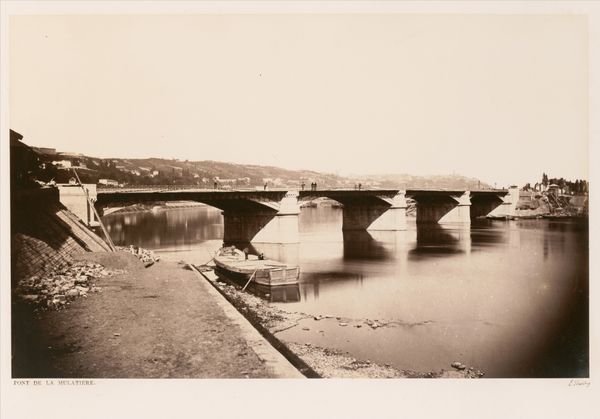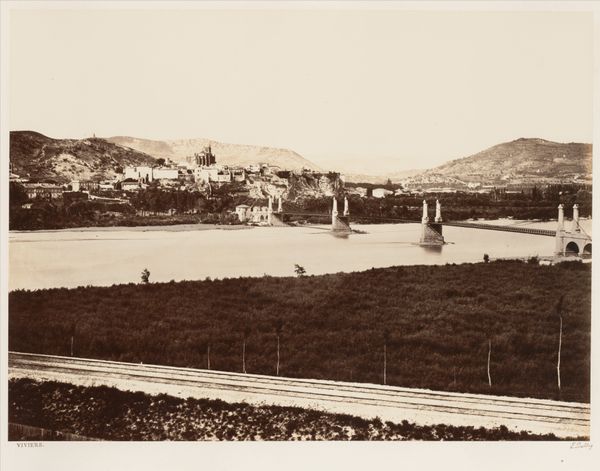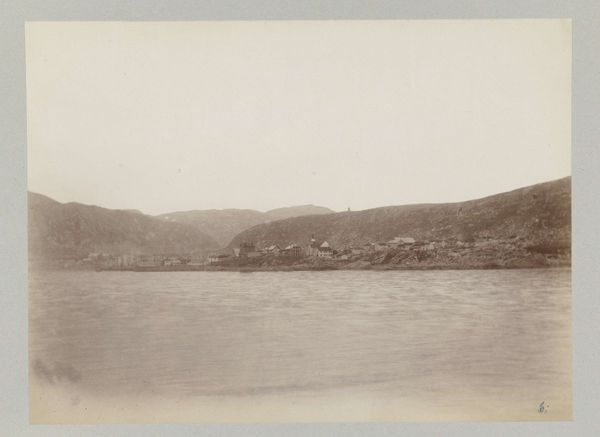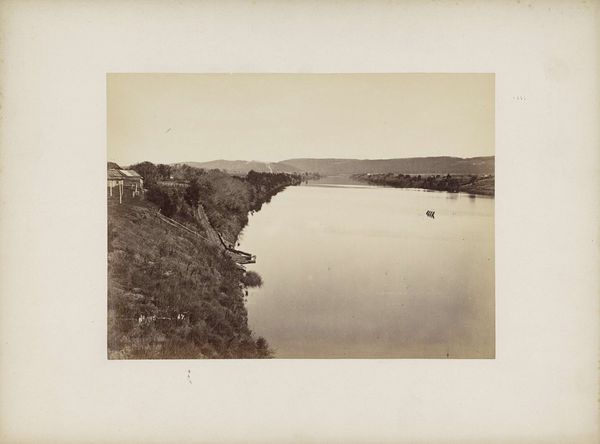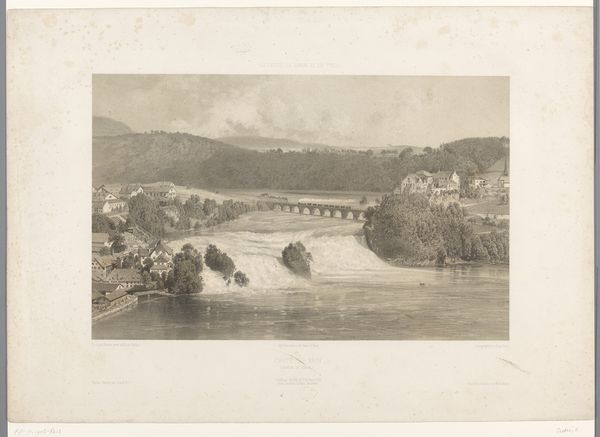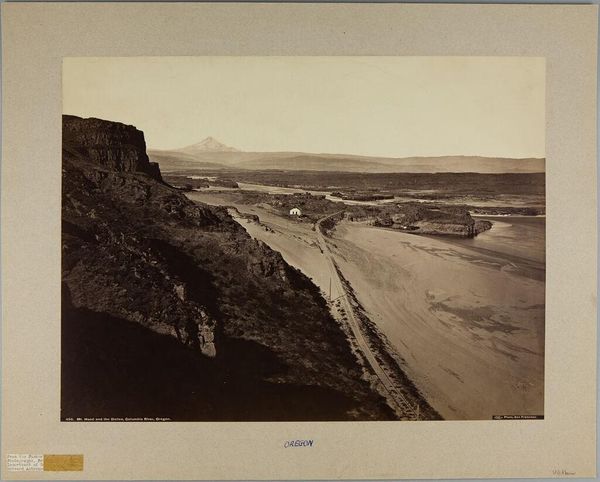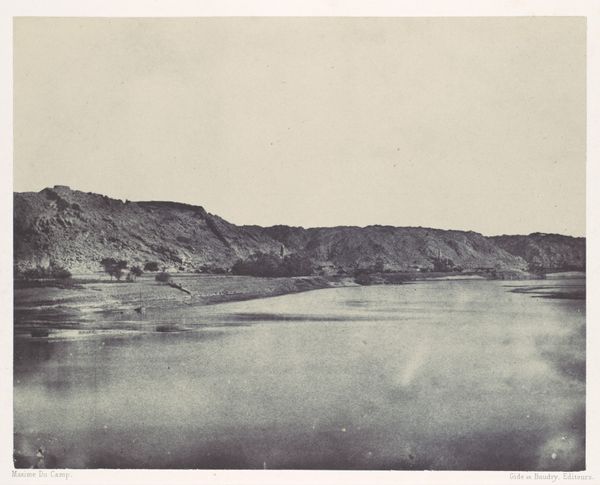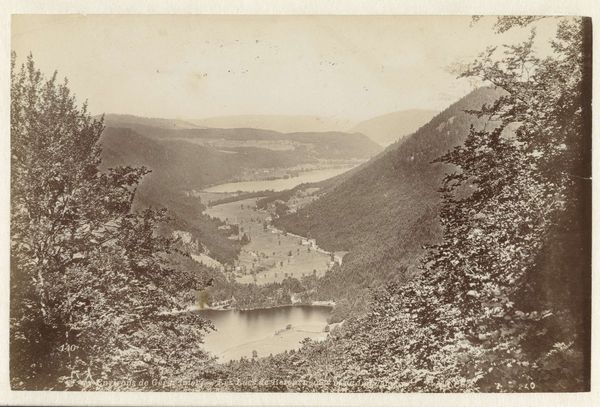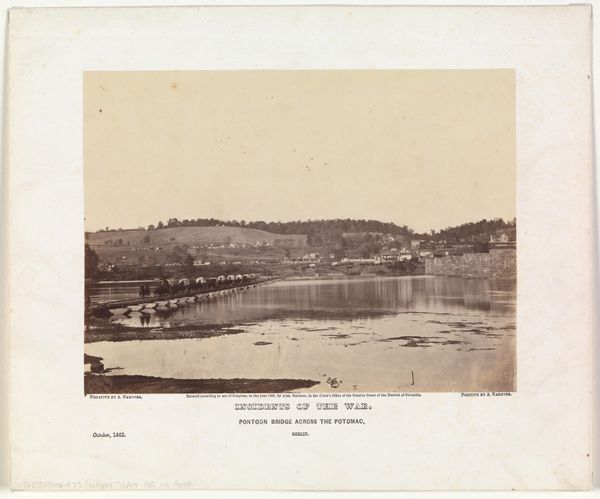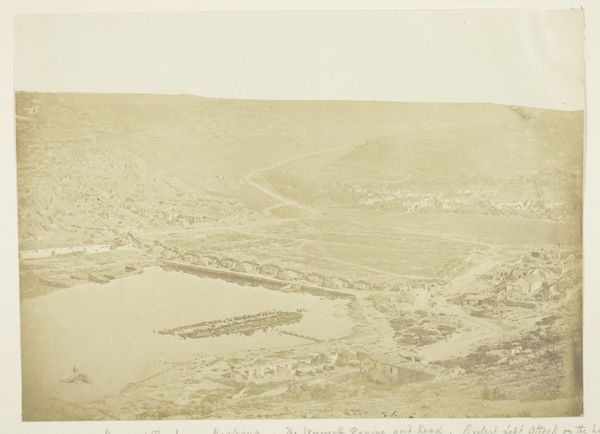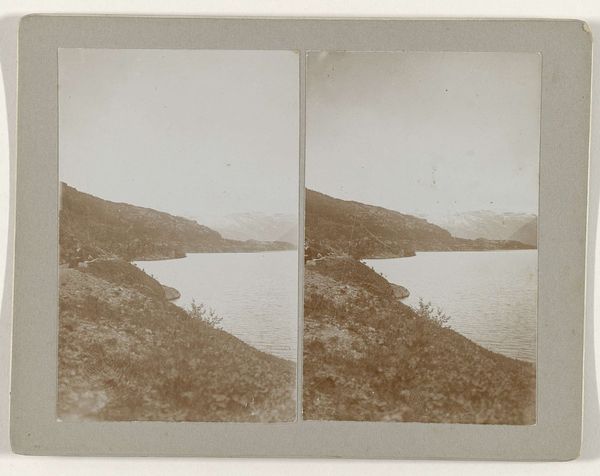
Dimensions: Image: 27.1 x 43 cm (10 11/16 x 16 15/16 in.) Mount: 46 x 60.5 cm (18 1/8 x 23 13/16 in.)
Copyright: Public Domain
Editor: This albumen print, “Givors, Viaduc,” was taken by Edouard Baldus sometime between 1860 and 1862. It depicts a long, arched bridge spanning a wide river, under a bright sky. It feels both monumental and strangely still. What do you see in this piece? Curator: I see more than just a bridge, I see a potent symbol of modernity’s ambition, especially in the visual dialogue between nature and industrial progress. The river, a natural, timeless element, is now being dominated by this feat of engineering. Consider the psychological weight of such transformations in the mid-19th century; were people in awe, or did they grieve for the changes? Editor: I hadn’t thought of it as something people might grieve over! The bridge looks so solid and permanent. Do you think the presence of people in the image, on the river bank, has any symbolic relevance? Curator: Absolutely. Their diminutive size emphasizes the scale of the bridge. But they're also *observers*, standing on the edge of tradition, looking at this symbol of future. Perhaps Baldus included them to remind us that progress is a human endeavor, built in relationship with its history, represented here by those tiny observers near the river. The muted tones and careful composition also create a visual language – a language that speaks of industrialization and romantic landscape painting living in tension. Editor: So the image isn't just a straightforward document; it’s packed with symbolic meaning about people and the changing world! Curator: Indeed. And it’s a meaning woven into the image using carefully chosen visual elements, connecting cultural memory with future possibilities. What have you noticed now? Editor: That the symbols can speak volumes, and photography can also function like the most potent history painting. Curator: Precisely. Every element contributes to an understanding of the era's transformation, its hopes, and perhaps even its anxieties.
Comments
No comments
Be the first to comment and join the conversation on the ultimate creative platform.
